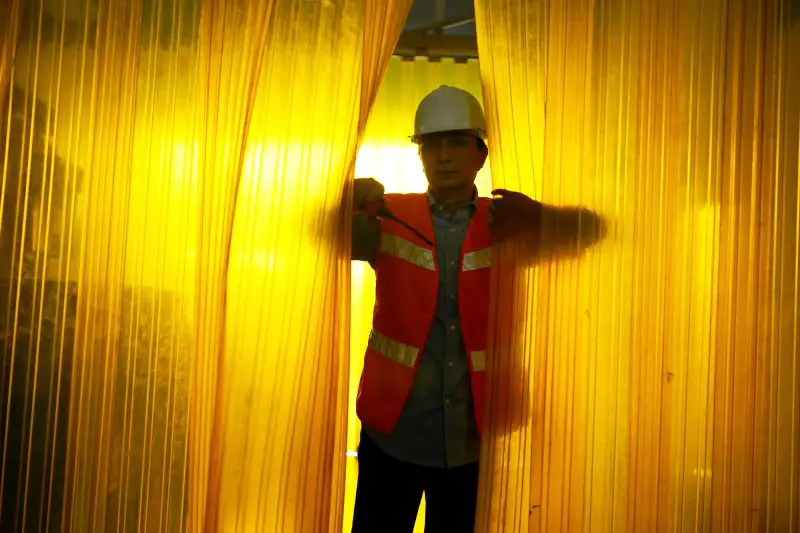Click here to get this post in PDF
This article contains affiliate links. For more info, see disclosure.
PVC curtains, or PVC strip curtains, are flexible barriers made from durable polyvinyl chloride (PVC) material. They are widely used in various settings, including industrial, commercial, and residential environments, to control temperature, reduce noise, and prevent the spread of contaminants. Their versatility and cost-effectiveness make them an essential component in maintaining efficient and safe workspaces.
What Are PVC Curtains?
PVC curtains consist of overlapping strips of PVC material suspended from a mounting system, creating a flexible barrier that allows easy passage while maintaining separation between different areas. They come in various types, including:
- Standard PVC Strip Curtains: Ideal for general-purpose use in warehouses and factories.
- Polar Grade PVC Curtains: Designed for cold storage areas, remaining flexible at temperatures as low as -40°C.
- Anti-Static PVC Curtains: Suitable for environments with sensitive electronic equipment, preventing static buildup.
- Welding Grade PVC Curtains: Protect against welding sparks and UV radiation.
- Ribbed PVC Curtains: Feature reinforced ribs for added durability in high-traffic areas.
Key Benefits of PVC Curtains
1. Temperature Control
PVC curtains help maintain consistent temperatures by minimising air exchange between different areas. This is particularly beneficial in cold storage facilities, where maintaining low temperatures is crucial. By reducing temperature fluctuations, PVC curtains contribute to energy efficiency and cost savings.
2. Noise Reduction
In noisy environments like factories and workshops, PVC curtains act as sound barriers, reducing noise levels and creating a more comfortable workspace. Their thick PVC material absorbs sound, helping to minimise disturbances.
3. Contamination Control
PVC curtains are practical against dust, fumes, and other airborne contaminants. They are commonly used in food processing plants, laboratories, and cleanrooms to maintain hygiene standards and prevent cross-contamination.
4. Energy Efficiency
By reducing the loss of heated or cooled air, PVC curtains help lower energy consumption. They are a cost-effective solution for improving insulation and reducing utility bills in various settings.
5. Easy Access and Workflow
PVC strip curtains allow for hands-free access, enabling smooth movement of people and equipment. This feature is especially useful in high-traffic areas, where doors would hinder workflow.
6. Pest and Insect Control
PVC curtains act as physical barriers to pests and insects, helping to maintain sanitary conditions in food storage areas and other sensitive environments.
7. UV and Chemical Resistance
Certain PVC curtains are formulated to resist UV radiation and chemicals, making them suitable for outdoor use and environments with exposure to harsh substances.
Common Uses of PVC Curtains
- Warehouses and Factories: Separate work areas, control temperature, and reduce noise.
- Cold Storage Facilities: Maintain low temperatures and prevent warm air infiltration.
- Food Processing Plants: Ensure hygiene by preventing cross-contamination.
- Cleanrooms and Laboratories: Control airborne contaminants and maintain sterile environments.
- Retail and Commercial Spaces: Separate customer areas from storage or staff-only zones.
Conclusion
PVC curtains are a versatile and cost-effective solution for controlling environmental factors in various settings. By understanding their benefits, applications, and selection criteria, you can make informed decisions to enhance efficiency, safety, and hygiene in your workspace.
For high-quality PVC curtains tailored to your specific needs, consider exploring the range offered by Rayflex Group, a leading UK manufacturer specialising in industrial PVC strip curtains.
Also read:
How PVC Strip Curtains Can Help Reduce Energy Costs
Image source: elements.envato.com

